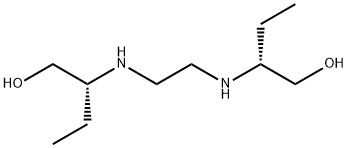1,2-Dichloroethane , ACS,≥99.0% , 107-06-2
Synonym(s):
1,2-Dichloroethane;Dichloroethane;Ethylene dichloride;Ethylene chloride;1,2-Dichloroethane in dimethyl sulfoxide
CAS NO.:107-06-2
Empirical Formula: C2H4Cl2
Molecular Weight: 98.96
MDL number: MFCD00000963
EINECS: 203-458-1
PRODUCT Properties
| Melting point: | -35 °C (lit.) |
| Boiling point: | 83 °C (lit.) |
| Density | 1.256 g/mL at 25 °C (lit.) |
| vapor density | 3.4 (20 °C, vs air) |
| vapor pressure | 87 mm Hg ( 25 °C) |
| refractive index | n |
| Flash point: | 60 °F |
| storage temp. | 0-6°C |
| solubility | 7.9g/l |
| form | Liquid |
| color | APHA: ≤10 |
| Relative polarity | 0.327 |
| Odor | Chloroform-like odor |
| explosive limit | 6.2-15.9%(V) |
| Water Solubility | 8.7 g/L (20 ºC) |
| Merck | 14,3797 |
| BRN | 605264 |
| Henry's Law Constant | 11.24 at 30 °C (headspace-GC, Sanz et al., 1997) |
| Exposure limits | TLV-TWA 10 ppm (~40 mg/m3) (ACGIH),
1 ppm (NIOSH), 50 ppm (MSHA and
OSHA); ceiling 2 ppm/15 min (NIOSH);
carcinogenicity: Animal Sufficient Evidence,
Human Limited Evidence (IARC). |
| Dielectric constant | 10.7(20℃) |
| Stability: | Volatile |
| LogP | 1.45 at 20℃ |
| Surface tension | 33.3mN/m at 20°C |
| CAS DataBase Reference | 107-06-2(CAS DataBase Reference) |
| IARC | 2B (Vol. 20, Sup 7, 71) 1999 |
| NIST Chemistry Reference | Ethane, 1,2-dichloro-(107-06-2) |
| EPA Substance Registry System | 1,2-Dichloroethane (107-06-2) |
Description and Uses
1,2-Dichloroethane, also called ethylene dichloride (EDC), is a manufactured chemical that is not found naturally in the environment. It is used principally to synthesize vinyl chloride, which is further used to produce a variety of vinyl based plastics products, such as polyvinyl chloride (PVC) pipes, furniture, automobile upholstery, wall coverings, housewares, and automobile parts. It is used in solvents in closed systems for various extraction and cleaning purposes in organic synthesis. It is used as a leaded gasoline additive to remove lead, but with declining tendency. It is used as a dispersant in rubber and plastics, as a wetting and penetrating agent. It was used in ore flotation, as a metal degreaser, and in textile and PVC cleaning. It was also used as an insect fumigant for stored grains and in mushroom houses, a soil fumigant in peach and apple orchards. But due to its toxicity, it is no longer registered for use as an insect fumigant in the United States (IARC 1999).
1,2-Dichloroethane structure
1,2-Dichloroethane is used in the manufacture of acetyl cellulose and vinyl chloride; inpaint removers; as a fumigant; as a degreaser;as a wetting agent; and as a solvent for oils,waxes, gums, resins, and rubber. It has been used as insect and soil fumigant.
Safety
| Symbol(GHS) |  GHS08 |
| Signal word | Danger |
| Hazard statements | H350 |
| Precautionary statements | P201-P202-P280-P308+P313-P405-P501 |
| Hazard Codes | F,T |
| Risk Statements | 45-11-22-36/37/38-23/25-23 |
| Safety Statements | 53-45-24-16-7 |
| OEB | B |
| OEL | TWA: 1 ppm (4 mg/m3), STEL: 2 ppm (8 mg/m3) (Chloroethanes) |
| RIDADR | UN 1184 3/PG 2 |
| WGK Germany | 3 |
| RTECS | KI0525000 |
| F | 3-10 |
| Autoignition Temperature | 775 °F |
| TSCA | Yes |
| HS Code | 2903 15 00 |
| HazardClass | 3 |
| PackingGroup | II |
| Hazardous Substances Data | 107-06-2(Hazardous Substances Data) |
| Toxicity | LD50 orally in rats: 770 mg/kg (Smyth) |
| IDLA | 50 ppm |



![Ethambutol Related Compound A (15 mg) ((2R,2'S)-2,2'-[ethane-1,2-diylbis(azanediyl)]dibutan-1-ol)](https://img.chemicalbook.com/CAS/20180808/GIF/10054-06-5.gif)


